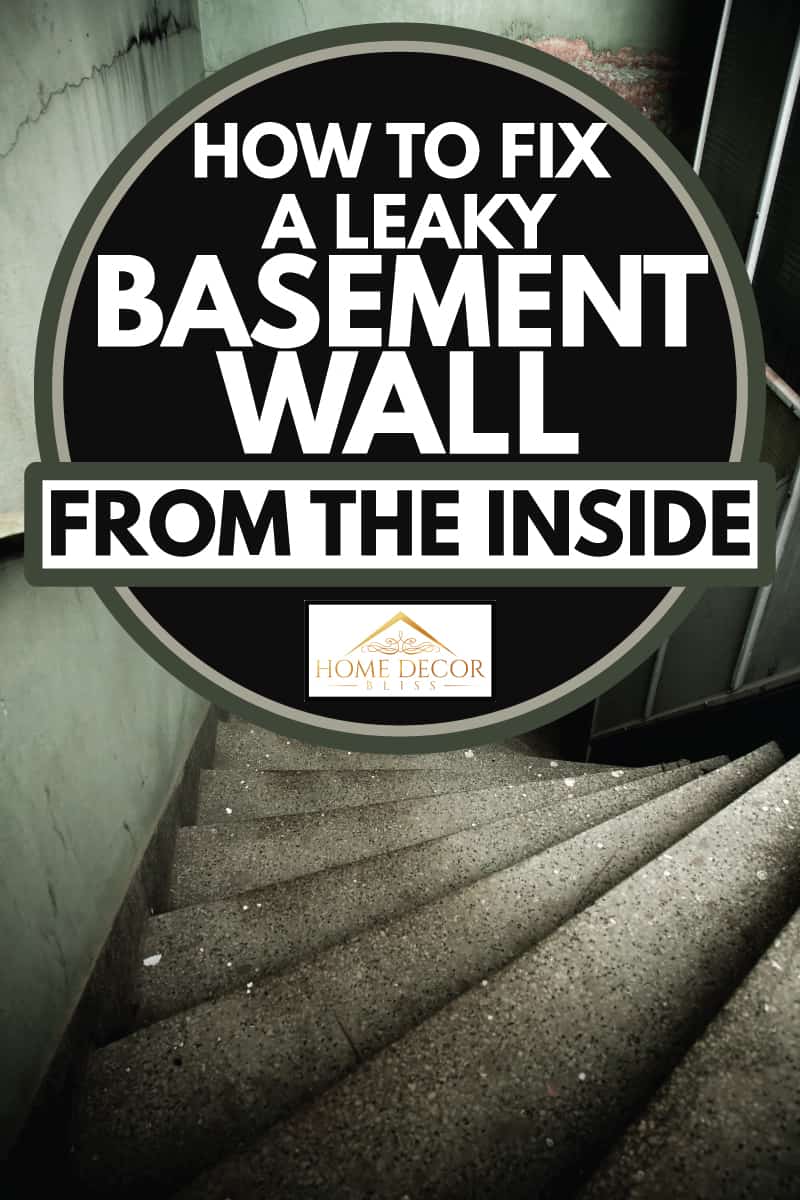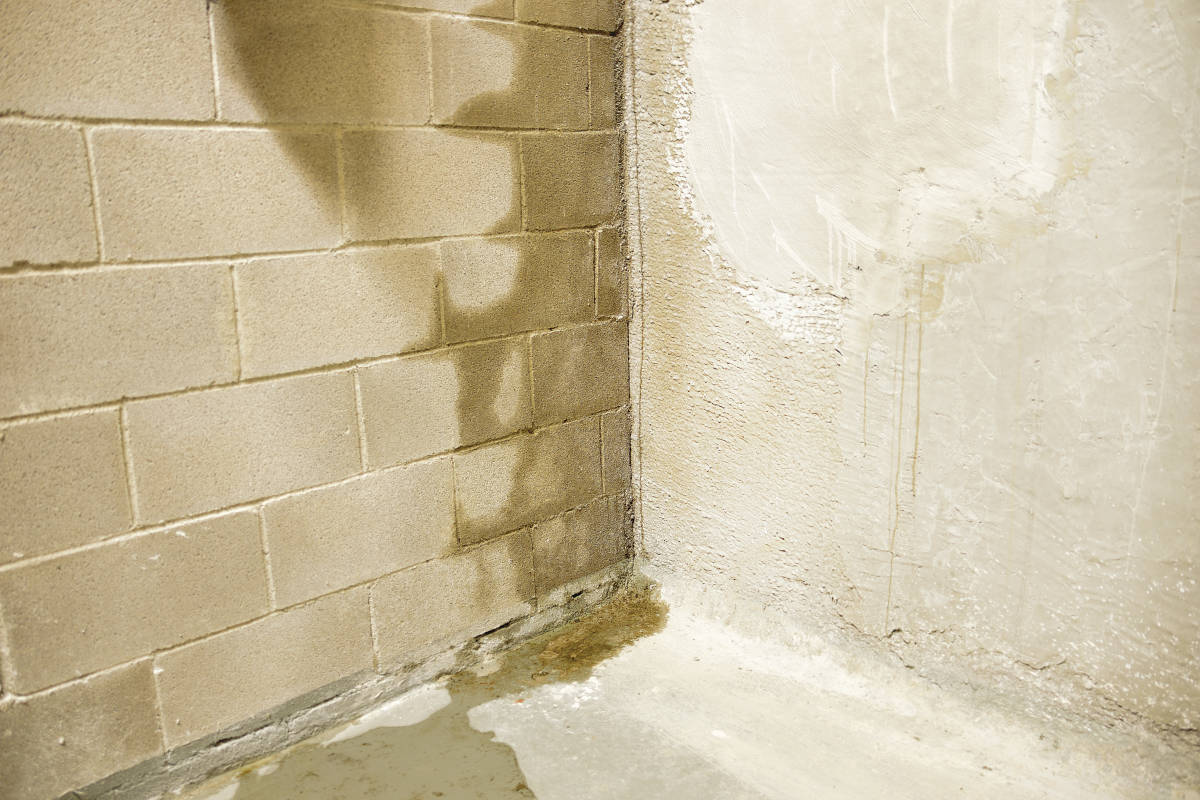From flooding and water damage to mold and bug infestation, a leak in your basement wall can cause big problems. When fixing a leak in the basement, it's important to know you can fix it from both the inside or the outside. Outside the wall, repairs are usually much much more expensive as they will require quite a bit of landscaping work. Repairing a leak or crack from the inside is usually the cheaper, faster, and easier option.
Usually, it's a good idea to call a professional to take a look at any leaks. If you can determine the cause of the leak yourself, it is possible to end the leaking of your basement for as low as $20 and only a little bit of your time. When repairing a basement wall there are a few steps you will need to take. If the wall itself is leaking it is likely that there are foundational cracks in the concrete. Leaks from inside the home or landscape issues will need professional work done. Fixing cracks in the wall or eliminating water can be done by following these steps:
- Determine the source of the leak.
- Fill the crack with caulk or concrete.
- Seal interior walls with masonry sealing solution.
Houses settle over time and this can lead to cracks in your foundation. Most of the time these are minor issues and you can repair them on your own. We encourage you to continue reading through this article as we go into detail on this process and other information you need to know to repair a leaky basement wall.

How To Fix A Leaky Basement Wall From The Inside
Let's take a closer look at the three steps for fixing cracks in the wall or eliminating water in the basement.
Determine The Source Of The Leak
Look around the basement. If there are any standing pools of water, you should look directly above them. Check all the basement walls for water stains or any water running down them. Water streaks show up easily on concrete walls because of the porous material it is made of. Also, be mindful of any mold locations in the basement. You may need to remove the mold to find the cracks. These will be the biggest clues as to where your leak is coming from.
If you're having issues determining the source of the leak, you can do a simple condensation test. You can check to see if your basement has cracks by using tin foil. Attach a one square foot section of foil to the wall and leave it for twenty-four hours. Peel it off the next day and check the side that was against the wall to see if it feels wet. If it is, then the water is likely coming in from the outside. If it is not then you will have to continue seeking the source of the water.
Fill The Crack With Caulk Or Concrete
Hydraulic concrete is a great option for filling cracks in basement walls. It may seem counterintuitive, however, when applying this solution, you will want to widen out the hole or crack. Make extra v-shaped cuts and rough up the area you plan on filling.
Remove all loose material in the crack and around the outside of the hole. Hydraulic cement will expand inside the crack, then harden. It will become an extension of the wall and is very durable. Be sure to read and follow all the instructions for the mixture you use, as it will set quickly and require a proper amount of water to be workable.
Seal Interior Walls
Masonry sealant works by covering and seeping into the concrete. It stops water from seeping through the concrete and reduces the amount of humidity and water vapor that can pass through or build up as well. Some sealants can even help block dangerous chemicals like radon gasses.
Do not apply this sealant over any walls that are painted; it is meant to be put onto bare masonry and won't have the same effects. Make sure to remove the paint if you or a previous owner painted the basement walls. The sealant will go onto the walls just like a coat of paint. Apply it thickly to cover all the little pores in the wall. Let the sealant dry overnight and then apply a second coat to get a proper watertight seal.
What Is The Best Sealant For Leaky Walls?
The best sealant to use on your basement walls is one that offers the most protection. You want the best watertight seal available and one that is also resistant to vapors or chemical fumes. From research, the best option for wall or floor sealant is from RadonSeal.
Click here to see this product on Amazon.
This is one of the only options that have a lifetime guarantee from the manufacturer on radon gas. It will reduce humidity, odors, and mold in the basement, as well as offer protection from water seepage and even radon gas. Even after sealing, you can go back in and apply paint over the sealant and it will not affect the paint. This sealant will protect your concrete and can be easily applied with a sprayer as well as a brush or roller.
Can You Seal A Basement Yourself?
The good news is that you can seal a basement yourself. For small cracks and holes, sealing them up is usually not an issue that a professional needs to be involved in. Fixing it from the inside is the easiest and cheapest option, but that doesn't mean it isn't effective and durable. Once the crack is filled, you'll seal it.
A sealant is applied just like paint. You can use a brush or roller to apply it. Get a thick layer on your walls to make sure the sealant goes down into the pores of the concrete. Let it sit overnight and give it time to completely dry. Then apply another coat. Follow any manufacturer directions on the sealant of your choice. This is the most effective way to reduce moisture and seepage through your basement walls.
How Much Does It Cost To Fix A Leaky Basement?

The cost to fix a leaky basement can vary. Internal wall repair is always going to cost much less than trying to repair the outside of the wall. Trying to repair the outside of the wall means quite a lot of landscaping and digging to reach the wall surface. This will also usually include the installation of drains and quite a lot more labor. Repairing the wall from the inside removes almost all of those costs, greatly reducing the overall amount you need to pay for repairs.
Filling in a simple crack in the wall can cost as little as $20. The only cost needed here is the caulk or hydraulic cement you plan on using to fill in the crack. Going further and sealing all of your basement walls will add about $100 to this cost, as that's around what the best options for sealants will run.
Calling in a professional or having to do major repairs can cause this cost to skyrocket to well over $2,000, so it is a good option to try to fix these leaks on your own before this becomes a necessity.
Does Homeowner's Insurance Cover A Leaky Basement?
Whether or not your leak is covered by homeowner's insurance is a complicated issue. One of the determining factors is the source of the leak. External water sources are rarely covered by homeowner's insurance. In fact, water seeping through cracks or pores in concrete is not covered at all by insurance. The best bet is to accept the relatively small cost of repairing cracks and removing water on your own.
If you are questioning your coverage, the best thing you can do is to determine the source of the leak and then give your insurance provider a call.
Other Things To Remember
Try to keep as much of your possessions as possible in water-proof tubs. If you haven't sealed your basement properly, it is likely that water will get into your basement eventually. Remember that small repairs are inexpensive and easily fixed on your own but if the problem worsens or continues, then you should call a professional to give your basement a look.
If you're looking for a visual guide, check out this video for basement wall repair:
There are other options for you to keep water out of your basement that doesn't have to deal with repairing the walls. Installing proper gutter systems can help direct the flow of water and reduce flooding. Check out our article Are Gutters Hard To Install? [Can This Be Your Next DIY Project?].
Repairing the outside of a basement wall or fixing foundational issues requires a lot of landscaping. If this interests you, our article How To Landscape Around A Foundation? [10 Steps] can help you out.
In Closing
Leaky basement walls are common and are generally not very difficult to repair. You just need to find the source of the leak, fill in any cracks you find, and then seal your basement walls with a quality masonry sealant. After reading through this article, you should have a pretty good idea of the steps involved and how you can solve a leaky basement problem on your own!


Good evening. I don’t see the product your using on the crack. I have a crack to fix
Thanks